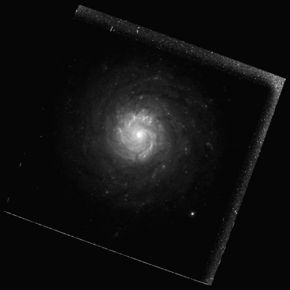NGC 3928
Today, NGC 3928 is a highly relevant topic that generates interest and debate in various areas. With the passage of time, NGC 3928 has become increasingly important in today's society, and its influence is noticeable in different aspects of daily life. From the personal sphere to the work sphere, NGC 3928 has proven to be a topic that does not go unnoticed, arousing the interest of experts, academics and people in general. In this article, we will explore different aspects related to NGC 3928, as well as its impact on today's society.
| NGC 3928 | |
|---|---|
 Hubble Space Telescope image of NGC 3928 | |
| Observation data (J2000 epoch) | |
| Constellation | Ursa Major |
| Right ascension | 11h 51m 47s[1] |
| Declination | +48° 40′ 59″[1] |
| Redshift | 0.000764[2] |
| Heliocentric radial velocity | 988 ± 4 km/s[2] |
| Apparent magnitude (B) | 13.1[1] |
| Characteristics | |
| Type | SA(s)b[2] |
| Size | ~18,000 ly (5.6 kpc) |
| Other designations | |
| NGC 3928, UGC 6834, MCG +08-22-019, Mrk 190, PGC 37136[1] | |
NGC 3928, also known as the Miniature Spiral,[3][4] is a lenticular galaxy, sometimes classified as a dwarf spiral galaxy, in the constellation Ursa Major. It was discovered by William Herschel on March 9, 1788.[5]
Gallery
-
NGC 3928 (SDSS DR14)
References
- ^ a b c d "NGC 3928". SIMBAD. Centre de données astronomiques de Strasbourg. Retrieved 28 May 2019.
- ^ a b c "NASA/IPAC Extragalactic Database". ned.ipac.caltech.edu. Retrieved 2019-05-28.
- ^ "Elliptical Galaxy in Ursa Major". TheSkyLive.com. Retrieved 2024-06-10.
- ^ Stoyan, Ronald; Schurig, Stephan (2014). interstellarum Deep Sky Atlas. Erlangen: Cambridge University Press; Oculum-Verlag GmbH. ISBN 978-1-107-50338-0. OCLC 920437579.
- ^ Seligman, Courtney. "New General Catalog Objects: NGC 3900 - 3949". cseligman.com. Retrieved 28 May 2019.
External links
- NGC 3928 on WikiSky: DSS2, SDSS, GALEX, IRAS, Hydrogen α, X-Ray, Astrophoto, Sky Map, Articles and images
Wikimedia Commons has media related to NGC 3928.
